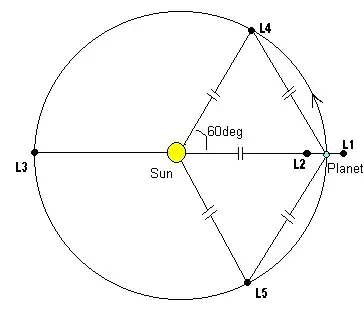Possible, yes. Likely? No.
I am going to present a short version of the science behind binary planets. For the whole thing you can refer to this article from the California Institute of Technology. Some scientists there made some simulations and published a paper on it.
So, what you want is known as a binary planet. It is different from a system like Pluto-Charon (because Pluto is way more massive than Charon), but similar to 90 Antiope.
The reason why I say it's unlikely is that for a binary planet system to evolve, a shock between to formerly solitary planets must go through a "kissing collision". They must "graze" or "scrape" each other in their impact. The tidal forces involved will cause large tides, which dissipate momentum and causes the system to become bound (i.e.: neither planet will reach the system's escape velocity).

This arrangement is not perfectly stable, and as the article mentions, it may only last a few billion years. The less ideal the collision is, the sooner the system will decouple or collapse. Needless to say this would be catastrophic to any life that has developed on the binary planet. It is possible that one of the resulting planets ends up falling on the star. It is also possible that one of them will be ejected from the star system. It is possible that the parts will collide again, which would merge them into a single planet. This would very likely melt the crust during the merger.
Regardless of whether you plan to give your binary planet denizens such a demise or not, here are the requirements for a binary planet to realistically form and stabilize around a star of spectral class G, such as our sun:
- Must stabilize its orbit around the parent star at least half an AU away from it;
- The surfaces of each part of the binary should stay one planetary radius apart from each other.
Also notice that the parts of the binary planet will necessarily be tidally locked.
So far I have only said what the article says. But from that we can infer some interesting properties of such a system.
For starters, it could reasonably be located withing the goldilocks zone around a G2V star. And since the arrangement can last for billions of years, with the original colliding planets having the same chemical makeup of proto-Earth and Theia, life as we know could develop on such a binary planet.
The orbital period of each around the barycenter would be quite short, in the order of hours. A geosynchronous orbit around Earth - that is, an orbit with a period of one day - requires a satellite to be six Earth radii above Earth's surface. Compare with the figure of a one planetary radius between the components of the binary (lower orbit = shorter period). This would cause daily eclipses (remember that the eclipsing body is way larger and closer to the eclipsed body than the Moon is to us). The region eclipsed on each component is always the same, due to tidal lock. It will get less sunlight everyday, effectively going through a permanent winter - which may be cumulative with the axial tilt related winter during parts of the year.
Just to be clear: insanely short orbital period + tidal lock = a sol that is much shorter than Earth's (I estimate 12-14 hours).
Gravity would be noticeably stronger on the side of each planet that is away from the other. Standing on the "outer" side of the binary, you get the whole pull from two planets. But in the eclipsing region, you get two strong pulls in opposite directions (though the planet you are standing on will have the larger pull). A similar tug-of-war exists between Earth and the Moon, but the Moon's pull is too little to be noticeable at all. Back to the binary, if some species ever makes it to the space age, they will find that at the barycenter the gravity pull is close to zero.
I don't know how to calculate the average gravity for each system component, but I do know that each one's mass is still around five martian masses. So I think average gravity would be much closer to Earth's than to Mars's.
If the binary has no moons, there will be no tides. If there is a moon orbiting the binary, it will have tides, though on a much smaller scale than those on Earth.
Finally, for a non-scientifical thing. It is my favorite part though. There is nothing to tell us how the beliefs of people from such a system would develop - but they have a nice setting to create awesome mythologies.



